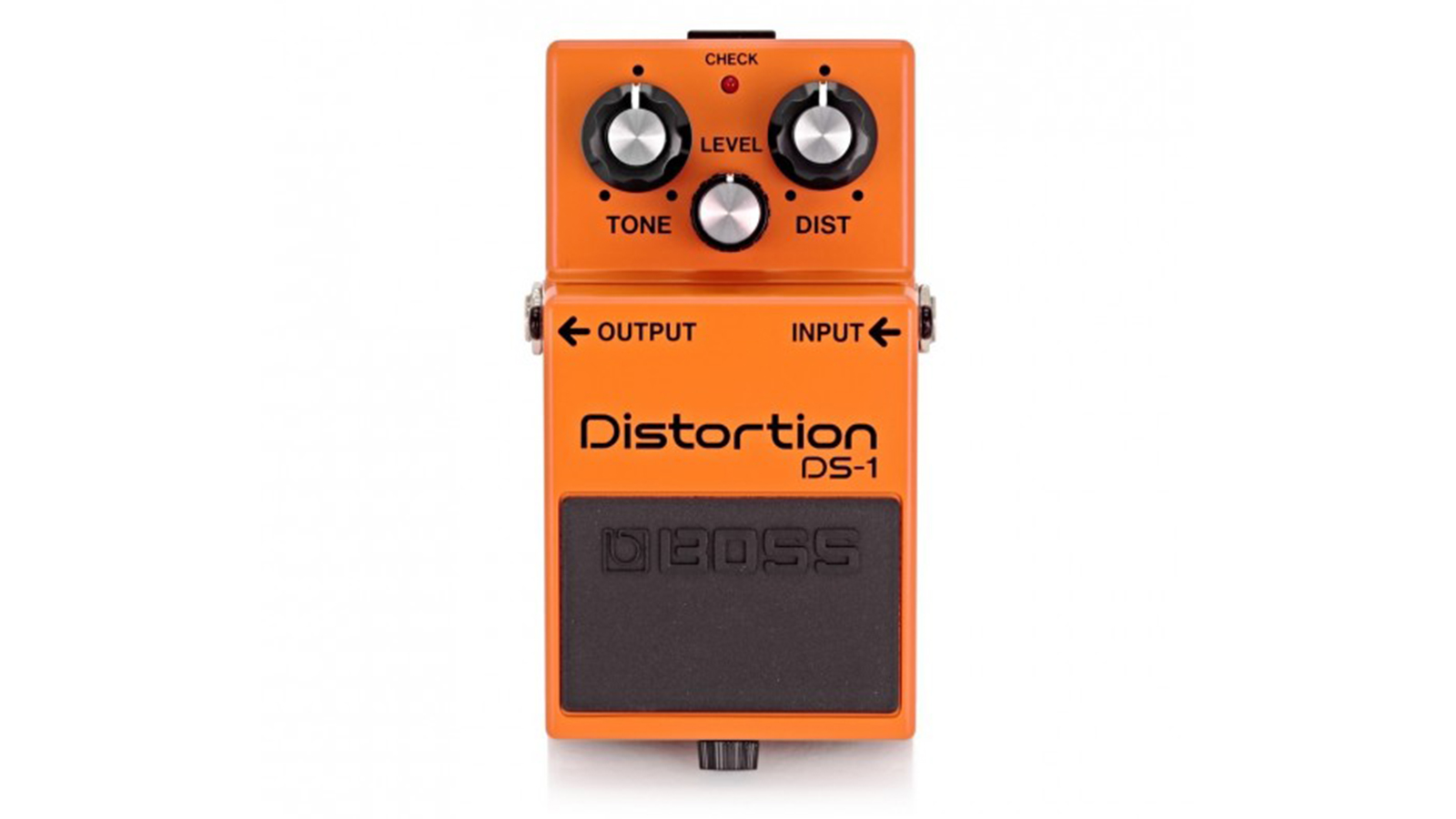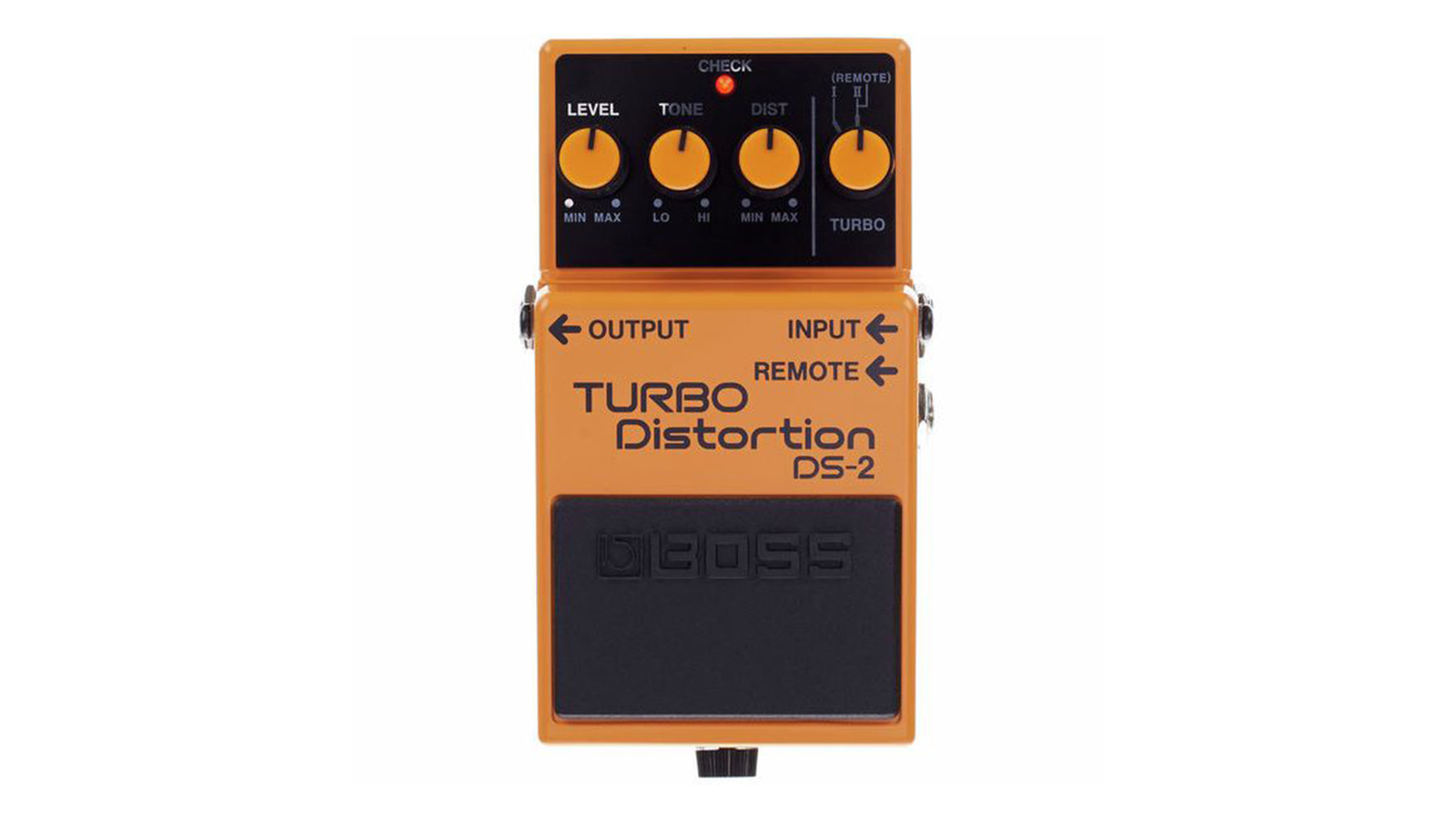Boss DS-1 vs Boss DS-2: What’s the difference?
Considering one of these iconic Boss distortion pedals? Here's everything you need to know before you take the plunge

In spite of the similar nomenclature, the Boss DS-1 and DS-2 are two very different distortion pedals. Each has its own distinct characteristics and idiosyncrasies that make them two very different beasts to deal with. These pedals may look very similar but ultimately that's where the buck stops, as what lies beneath each of these mandarin enclosures covers very different sonic ground.
One of the original distortion stompboxes, the DS-1 has existed over multiple eras, meaning there are many different versions to contend with. On the other hand, the DS-2 has additional modes that give it more in common with the BD-2 Blues Driver than its similarly named predecessor. Both are fantastic pedals there's no doubt, but which one is right for you? Read on to find out.
Boss DS-1 vs Boss DS-2: History and versions

The DS-1 was first manufactured in 1978, the same year that the ProCo RAT made its debut. Giving its name, 'distortion', to the hard-clipping that created its distinctive tone, it mirrored the OD-1 in setting the template for all pedals of the type that would follow. It was warm and gritty, and in many ways very different in tone to the majority of the DS-1s that would be made.
The DS-1 was based around a preamplifier chip, the Toshiba TA7136AP. In 1994 this changed, when the TA7136AP became harder to source, and the circuit was redesigned. The result was less than stellar. The new unit wasn't as loud, resulting in issues dialing it in with other pedals and amps.
Additionally, at higher gain settings, the pedal's tone control had a small usable range, with fizzy high frequencies not filtered out. Unlike the Boss Metal Zone, where there were at least ample tools to EQ out bad frequencies, the simplicity of the DS-1 worked to its detriment, and made it less usable. A cottage industry of modders and community guides grew up to fix the pedal, with some big players in the boutique scene starting out with mods to the DS-1 and other units.
Luckily, when Boss reissued the DS-1 in the form of the DS-1W Waza Craft, they included a custom mode that remedied many of these problems. It also bumped the volume gain on tap by 6dB. However, the stock mode remained the post-1994 circuit, much to the disappointment of those looking to chase the tone of players like Kurt Cobain that had owned and used 1980s units.

The Boss DS-2 was introduced in 1987. By that point, the venerable DS-1 was already pretty long in the tooth, and Boss was looking to offer players, new and old, an alternative. The pedal featured two distortion modes, with a jack input allowing the player to switch them using an external footswitch. The general consensus is that mode one models a DS-1, but side-by-side they don't sound that similar.
All the latest guitar news, interviews, lessons, reviews, deals and more, direct to your inbox!
In fact, both modes on the DS-2 are a beast of their own, and were used by players like Kurt Cobain and John Frusciante to create signature sounds. Mode one is flatter in EQ profile, and in this sense it is more similar to the DS-1, albeit without any of the unity volume pitfalls of the post-’94 unit. In mode two, an additional gain stage is added, resulting in a louder, punchier effect. A low-mid boost results in a 'honk' that isn't present in mode one. This makes it ideal for solo work.
In terms of clipping, there's hard-clipping diodes in the circuit, but at lower input levels and especially in mode one, soft-clipping diodes in the main stage feedback loop are doing work too. Perhaps the biggest difference from the DS-1 is that the main amplification stage is essentially a discrete op-amp. That is, an operational amplifier made out of individual components rather than a chip – in this case four JFETs. This can at least partly explain the tonal difference from the DS-1. However similar the two circuits are, the DS-2 is a discrete op-amp, whereas the DS-1 is a chip.
Boss DS-1 vs Boss DS-2: What do the pedals sounds like?

The pre-1994 DS-1 is open and relatively flat in EQ profile, and heavily clipped. It might be a stretch to describe such a sound as articulate, especially at the further reaches of the gain control, but it's not as overwhelming as a fuzz. In addition, it stacks relatively well with other boost and drive pedals.
The post-1994 DS-1 has its problems, as described above, but into the right amp set-up, it can still rip. Especially in the tight confines of a practice space, the higher gain settings create a grinding wall of noise. The issue is that without careful EQ in the treble range, you're likely to hear a volume drop when engaged.
The Waza Craft is a different beast again. It's not quite the same as the pre-’94, as the EQ profile isn't as flat. Instead, it's more mid-forward, jumping out of the speaker and punching through a band mix better.

The DS-2 has a lot more volume gain on offer than most versions of the DS-1 post-1994. Even then, it's got a lot of gain on tap. This means it's more able to push a tube amp into saturation, at the cost of being more compressed across the board. This, combined with a different EQ profile is what some players describe as the 'boxiness' of the DS-2.
This is part of the reason that the tone control is more usable, however. Unlike the DS-1, even when wide open, the DS-2 doesn't become overwhelmingly 'fizzy'. Especially into a decent amp, you can run the treble pretty much maxed out, especially in mode two.
However, this does have an obvious drawback, which is that it sounds less 'open' than the DS-1. If you're able to tame the sometimes overwhelming treble of the DS-1 and integrate it into your rig, the resulting distortion can be less compressed and more articulate. However, when it comes to punching through a mix, once again the DS-2 has the edge, especially in mode two.
The fact that it's a discrete amplifier also means that its response is less mechanically ideal than a true op-amp. This imperfection is arguably more suited to an audio use case like an overdrive pedal. This amplifier topology has more in common with the Boss BD-2 Blues Driver than the DS-1, since the BD-2 was also designed around a discrete op-amp.
Boss DS-1 vs Boss DS-2: Which one should you pick up?

If somebody you know is getting rid of a mystery DS-1, try and suss out what era it is, then see if it's your cup of tea. There's so many around that it means the DS-1 is not that expensive, and that gives it great appeal. However, the best versions are the Waza and pre-’94, and they will cost you.
The Waza definitely does its own thing, but there's a case to be made that, for the cost, there are better distortion pedals to be had.
Although mode one is very different to the DS-1, it's more open than mode two, and works well for rhythm playing. On its own, it can sound compressed, but in a band mix or when recording, the DS-2 comes into its own. In this context, mode one disappears into the background a little, without getting completely lost, while mode two punches straight through.
The live reality of heavily compressed drive tones is that most of the time a lot of the additional frequencies in the guitar signal either clash with other high-frequency content or don't add much. It comes down to personal taste whether or not you want the more open-sounding pedal, at the cost of having to dial it in a bit more carefully.
It's worth saying, however, that many of the issues with the majority of DS-1s are solved by the 'custom' mode on the Boss DS-1 Waza Craft reissue. It has better filtering, and a more usable tone and gain range. It is however also more mid-forward, meaning that at least from an EQ perspective, there's less to tell it apart from the DS-2.
Alex Lynham is a gear obsessive who's been collecting and building modern and vintage equipment since he got his first Saturday job. Besides reviewing countless pedals for Total Guitar, he's written guides on how to build your first pedal, how to build a tube amp from a kit, and briefly went viral when he released a glitch delay pedal, the Atom Smasher.

